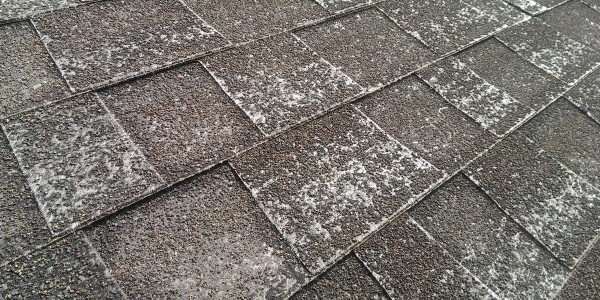Knowing whether or not it’s time to replace your roofing shingles is important to avoid potential leaks and costly repairs down the line.
There are a few signs that shingles need to be replaced. Although blown-off shingles don’t look appealing, they don’t always indicate impending failure, especially if the odd shingle is blown off by unusually strong winds. On the other hand, if they’re blowing off under weather conditions that are not extreme, it could be a sign of the shingle needing replacing.
Another sign is looking at the shingle’s granule coating. The granule coating not only gives the shingles their colour but protect against UV damage from the sun. Some granule loss is typical of aging shingles, but excessive granule loss leaves bald patches, which cause the shingles to dry out rapidly and split. One also wants to watch out for curling and lifting, both indicators that the shingles are drying out.
If it turns out that the shingles have reached the end of their lifespan and they’re shot, a person has two options: A reroof or a full replacement.
What is a reroof?
Reroofing is when roofers replace old or damaged shingles with new ones on a case by case basis by placing the new shingles over the old ones. A reroof may only need to be focused in one problem area if shingles in other parts of the roof are working as they should.
What does a full replacement look like?
A full replacement consists of roofers stripping down the roof to the sheathing and installing new roofing. As you might imagine, a full replacement is a much larger and more expensive job than a minor reroofing.
Although a reroof can be less costly, a reroof can reduce the life span of new shingles by 20% to 40%. This dramatically decreased life span is a result of the original roof shingles not being as good a substrate as the underlying sheathing.
Compared to underlayment over wood sheathing, the old shingles are an uneven surface. This means that the new shingles don’t sit as flat, making them more susceptible to movement and blow off.
In some cases, homeowners like to look into things themselves. If a person sees daylight coming in through the roof boards in the attic or they notice a spongy feel when walking on the roof it may be time to call in the pros. While in the attic, always check for moisture in the insulation. If it’s moist, it is a sign that moisture is somehow getting in through the roof.
Sometimes one of the better tests a person can do is grabbing the ladder out from the garage and having a look in the gutters for granules. When a person looks in their gutter, and they say an abundance of shingle granules, that could be the sign the roof is at the end of its life.
Fibreglass and asphalt roofing tends to lose more granules toward the end of their life cycle. Inconsistent or darker color on some parts of the roof is another sign the granules on the shingles have worn away and require replacing.
The experts at Shoreline Roofing can help you with all of your roofing needs, including maintenance, installations, repairs, de-mossing and much more. Contact us today at (250) 413-7967 or at ed@shorelineroofing.ca to find out more about how our services and how we can help you.

